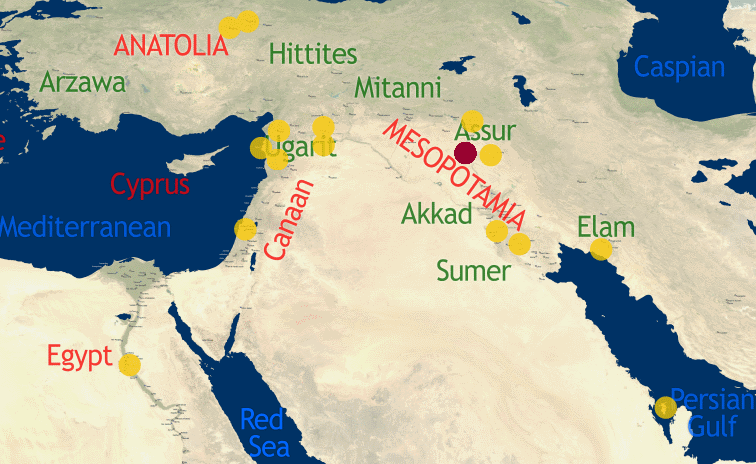The Lexical Texts from Middle Assyrian Assur
The lexicographical tradition found at late second-millennium Assur is explicitly and emphatically a Babylonian tradition. The Assur lexical corpus is more comprehensive than contemporary text groups from Amarna, Emar, Ugarit, or Hattuša, reflecting the desire to own and control the entire lexicographic tradition, including extremely rare compositions.
Cuneiform writing had been known in Assur and the area around Assur for many centuries, but the city never developed an independent written tradition. By the end of the fourteenth century, after the Hittite king Šupiluliuma defeated Mitanni the city of Assur quickly became formidable military and political power under king Aššur-uballiṭ I and his successors. Assyrian scribes appropriated Babylonian scholarship and thus matched the Assyrian claims to power with a cultural heritage of considerable chronological depth. The god Assur, the central god of the Assyrian pantheon, was identified with the main god of the Sumerian pantheon Enlil as the "Assyrian Enlil." This identification enabled the appropriation of an entire mythology around Enlil, his spouse Ninlil and their son Ninurta. By the same token, the ancient Sumerian language, which had no roots in Assyria, could now be used legitimately in the cult of Assur employing hymns and laments to Enlil borrowed from Babylonia.
The Middle Assyrian lexical corpus includes well-known lists, such as the sign list Sa and the thematic list Ura, but also composition that are not found elsewhere in this period. The most unusual composition is a phrasebook with sentences used in contracts, known after its first line as Ki-ulutinbiše (or, in Akkadian, as ana ittišu). Ki-ulutinbiše was originally composed in Old Babylonian Nippur and indeed several exemplars of the Middle Assyrian edition indicate that they were copied from Nippur originals.

Map of the Ancient Near East in the Middle Babylonian period. Click on a yellow dot for more information. Adapted from a map by DBachmann on Wikimedia Commons.
27 Dec 2019
Niek Veldhuis
Niek Veldhuis, 'The Lexical Texts from Middle Assyrian Assur', Digital Corpus of Cuneiform Lexical Texts, The DCCLT Project, 2019 [http://oracc.museum.upenn.edu/dcclt/lexicallistsperiods/middlebabylonian/assur/]